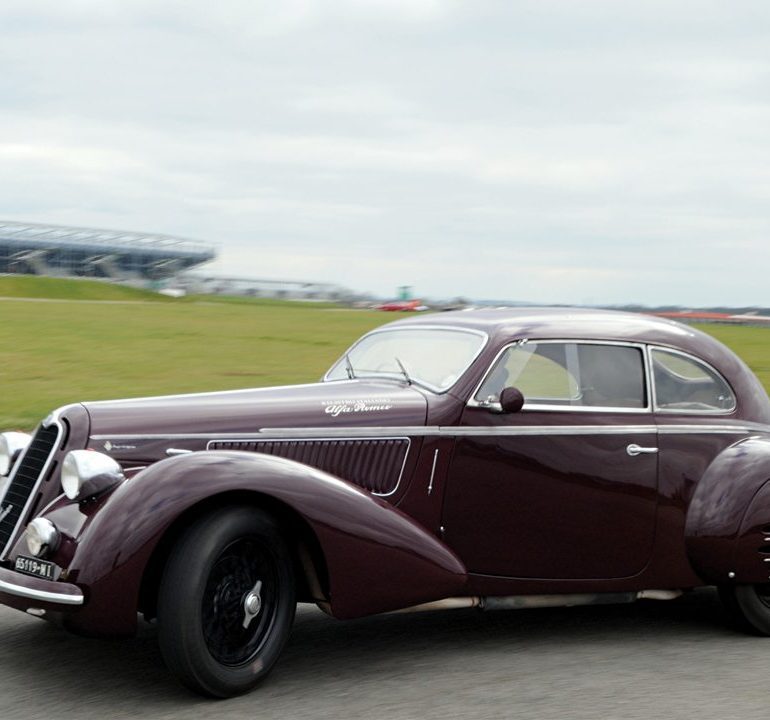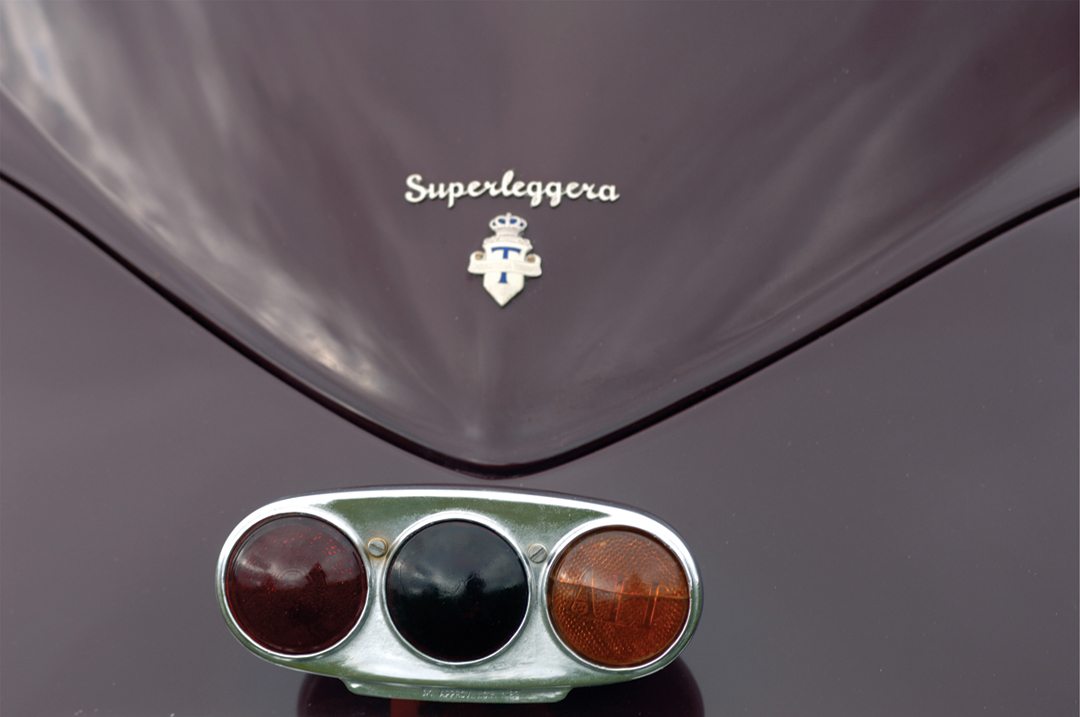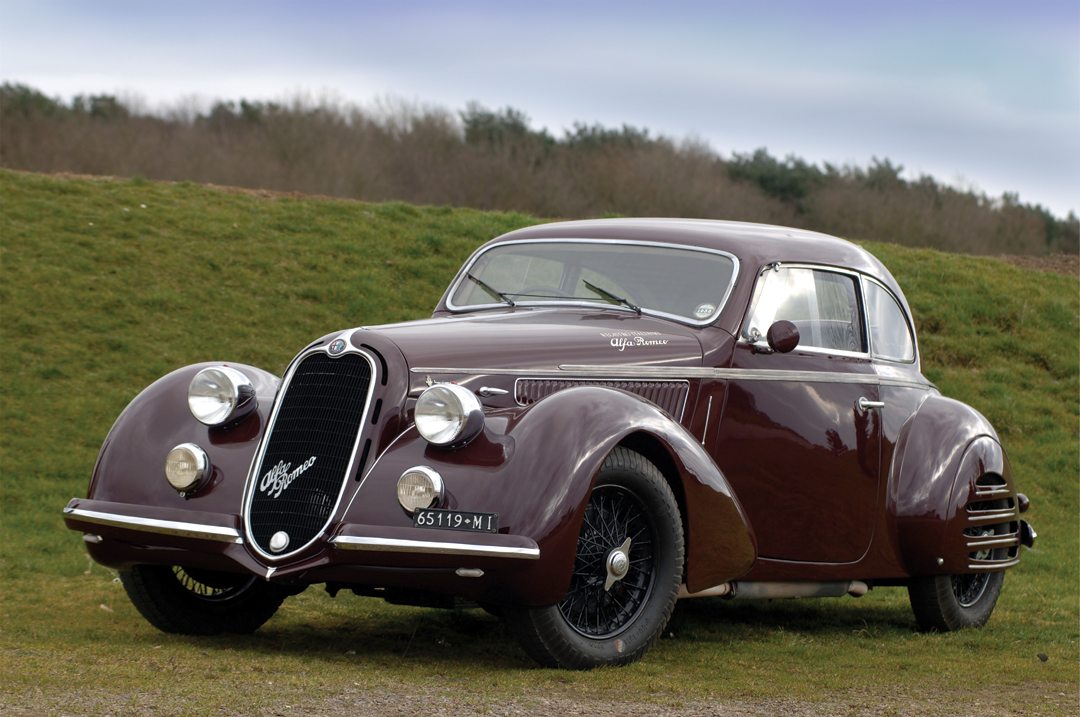
Alfa Romeo: great looks and high performance. What combination could be more natural?
Competition has just oozed out of every pore of the Milanese firm for nearly a century and still did until very recently but, we digress, this is about a road car, not a racer. Even so…
Since the company’s establishment, there have been few breaks in the continuity of cars capable of competing emanating from Alfa’s factories. Probably the first to take part in any serious sport were two ALFA 20/30hp cars in the 1911 Targa Florio but, as far as Touring Car events are concerned, we have to motor forward to the period of the inauguration of the Mille Miglia in 1927 to see the first signs of the appearance of excellent road-going Alfas that were equally at home as competition cars with world-beating potential.
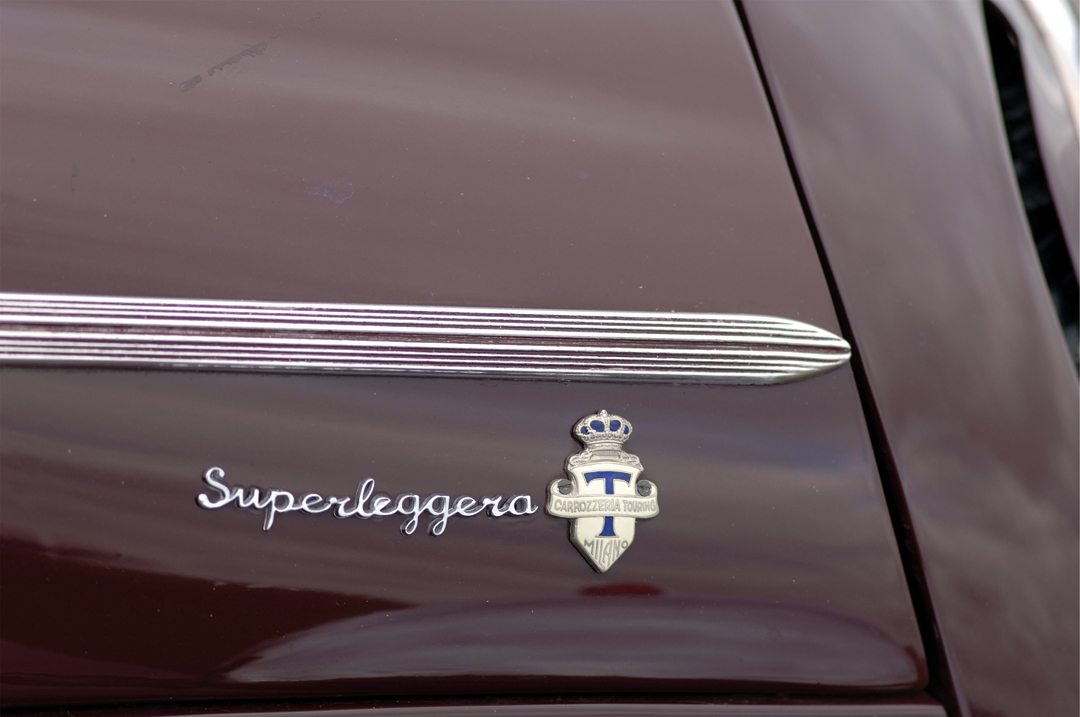
That first, in 1927, 1000-mile gladiatorial enduro around Italy was something of a disappointment for Alfisti as their RLSS cars started the favorites, but all retired. It was the model’s last hurrah, however, as this result was something of a red herring and in no way indicative of how things at the Portello factory were going to be in the future. That was because the Torinese, Vittorio Jano, soon to become accepted as one of the world’s greatest automotive engineers, had joined Alfa and created a medium-sized, 6-cylinder, two-seater sports/touring car called the 6C 1500, thus rendering the RL line dinosaur-like and obsolete.
Gradually the new model underwent development with improved performance and larger engines, and ultimately enjoyed considerable sales success both on the road and in competition. The chassis had debuted at the Milan Salon in 1925, but delays meant it wasn’t in production until the latter part of ’26. One of its earliest competition successes was a win at the 1927 Circuit of Modena in June, driven by one Enzo Ferrari.
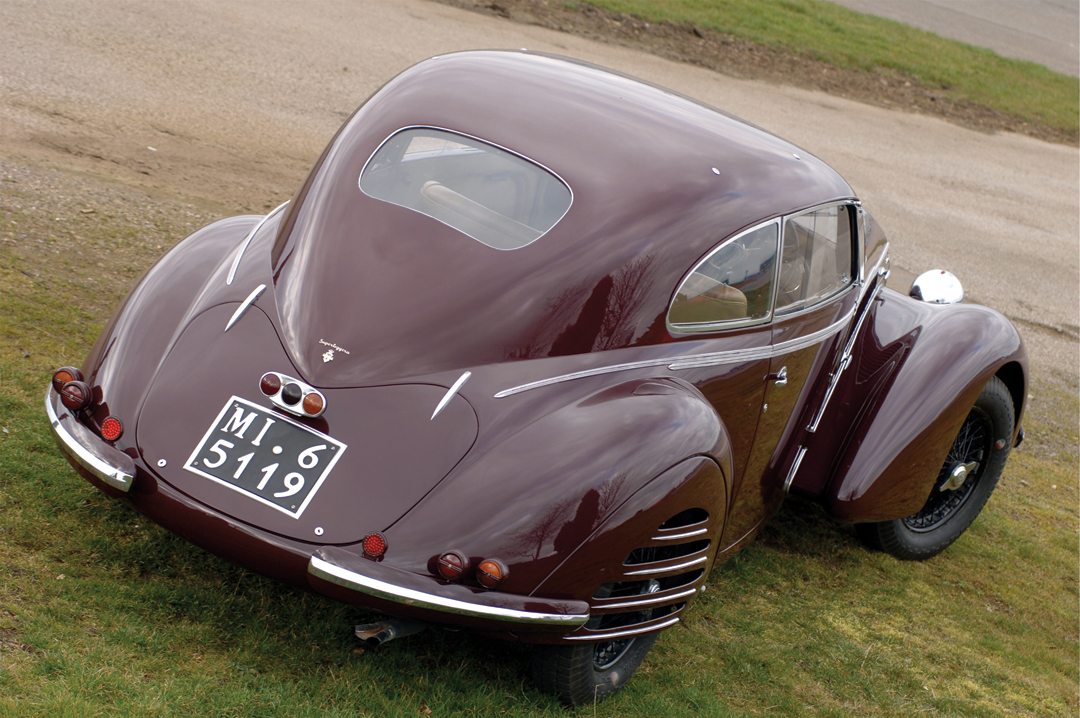
By the turn of the decade Alfa was amassing race wins and Jano was creating automotive sculptures that were the envy of many, and the introduction of two extra cylinders with the 8C 2300 signalled to the world that here was his masterpiece. In 1933, Alfas annexed every position in the overall top ten finishers of the Mille Miglia, as well as having already won the Le Mans 24 Hours. In the following 1935 and 1937 MMs only one car in that top ten wasn’t an Alfa Romeo.
It wasn’t just on the racetracks that the company shone, thoough, its products literally did so at the various Salons held around Europe and the increasingly popular Concours d’Elegance competitions held at the more affluent watering holes of the period, from Gstaad to the Villa d’Este in Como, to San Remo and Nice.
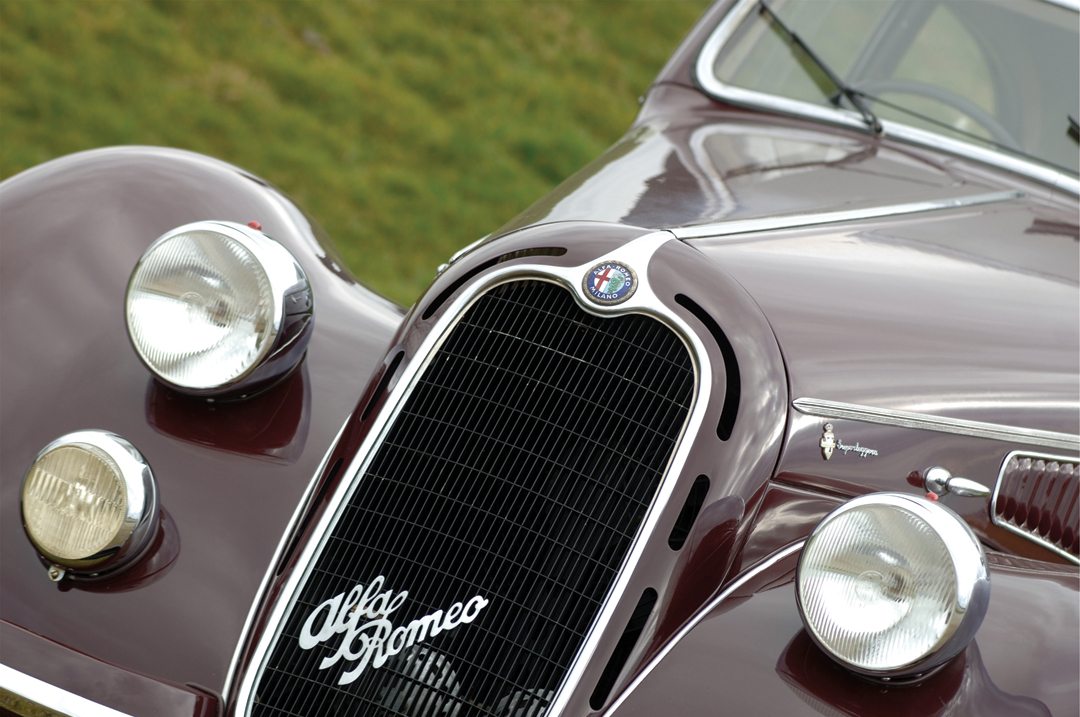
Of the many, it is Carrozzeria Touring that we are interested in here as the designer of the gorgeous body shape you see featured. Touring was started in 1926 by Felice Bianchi Anderloni, in partnership with banker Gaetano Ponzoni, after the former had worked for Isotta Fraschini followed by a marketing role with Peugeot Italia. It was, in fact, a virtual renaming of an existing company, Carrozzeria Falco, which had amassed for itself a wealth of experience in lightweight design and construction methods connected with the aeronautic industry.
While Ponzoni concentrated on the business side of the company, Anderloni virtually taught himself body design and construction, and was particularly interested in incorporating these aircraft methods into those of Touring’s car designs, especially in terms of light weight. He is said to have coined the phrase “Weight is the enemy; air-drag is the obstacle,” and thus the famous Superleggera method of construction was evolved.
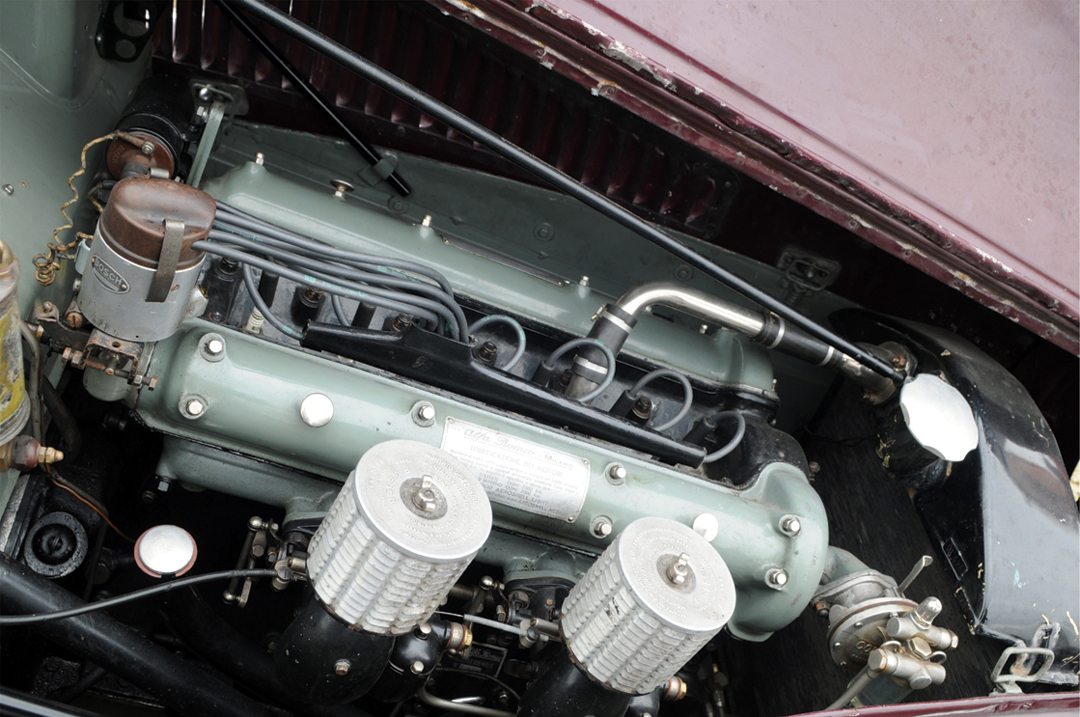
Two years before, at the Milan Motor Show, an entirely new Alfa had been announced. This was the 6C 2300. The genius Jano had completely reworked the old six-cylinder 1900 engine. A steel block was topped by an alloy cylinder head, and the gearbox had four speeds so that with two Solex carburetors the new engine produced 68 bhp at 4400 rpm. Available were sedans by Castagna and Grand Touring versions by Alfa themselves. Three special cars took 1-2-3 in the Pescara 24 Hours, and the 6C 2300 Pescara coupe, somewhat similar in looks to our car here, was named after the achievement. One saloon, a special car called the Soffio di Satana was created by Touring.
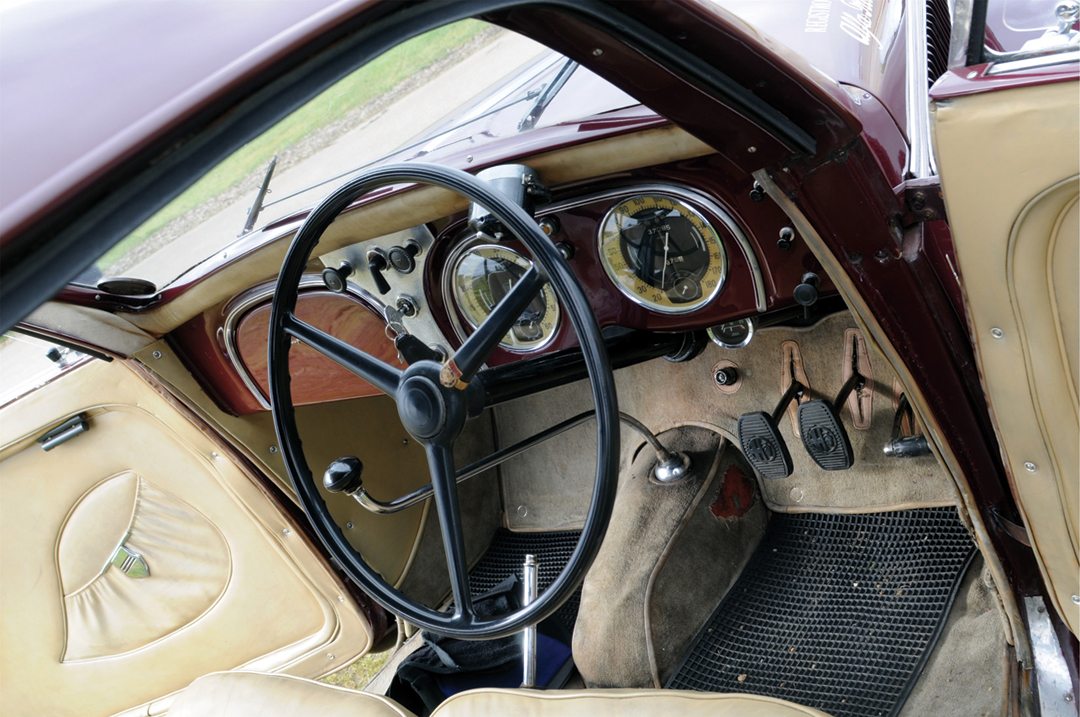
Carrozzeria Touring had originally been taken on to help, and four-door sedans designed by them had appeared in ’34-’35, which proved popular as well as relatively cheap and easy to make, but the impetus of the increased pace of industrial output and Alfa’s success in races such as the Mille Miglia had caused development rates for Alfa’s engines to increase, and in 1937 a Second Series 6C 2300 B Mille Miglia emerged from Alfa’s Portello factory. It made use of the more powerful engine and improved mechanical sophistication, as well as utilizing Touring’s more efficient, lighter bodywork construction methods.
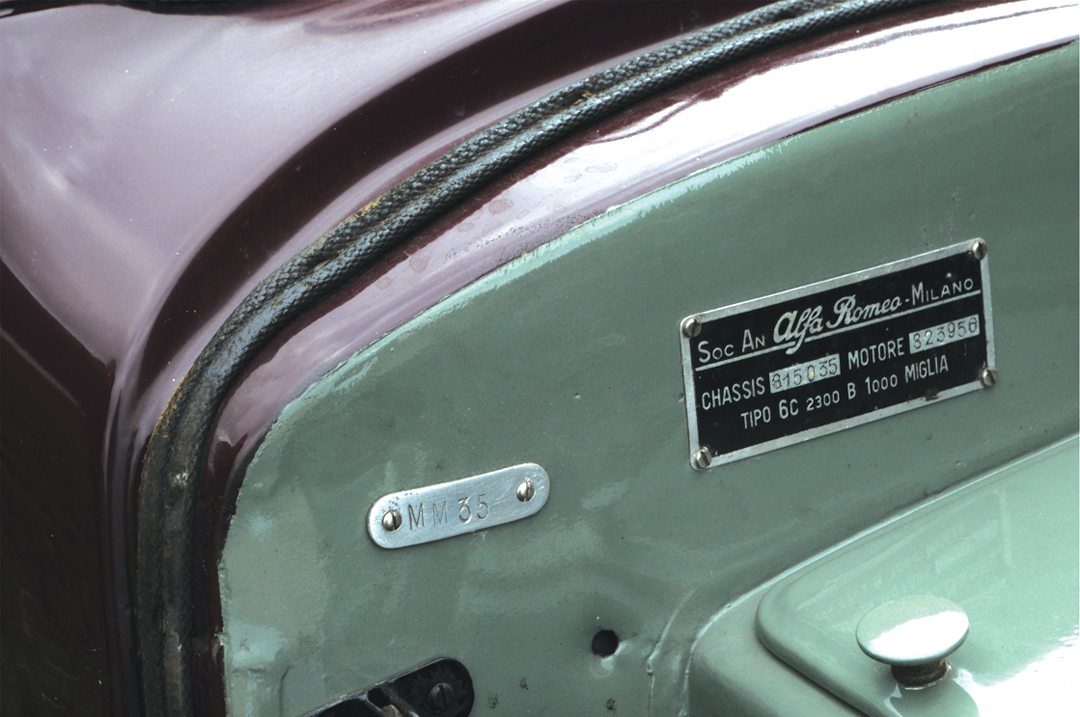
The method allowed Touring’s designers much more freedom and the results can clearly be seen with this fabulous Mille Miglia. The tapering bodywork toward the rear, and the way the almost art-deco strakes over the rear wheels blend round into the tail were indications of the direction the Carrozzeria was to lean in its designs through the years immediately after the finish of the war.
With its more powerful engine developing 105 bhp and ultra-light construction helped by such detail as the skimpily framed seats and the use of Plexiglas in the side and rear windows, the 1937 prototype was entered for the Mille Miglia and finished 4th in the hands of Giovanbattista Guidotti and Ercole Boratto, who was Mussolini’s personal driver. The car went on to win the Benghazi-Tripoli race in December ’37 with Boratto at an average 134kph for the 1020-kilometer event.
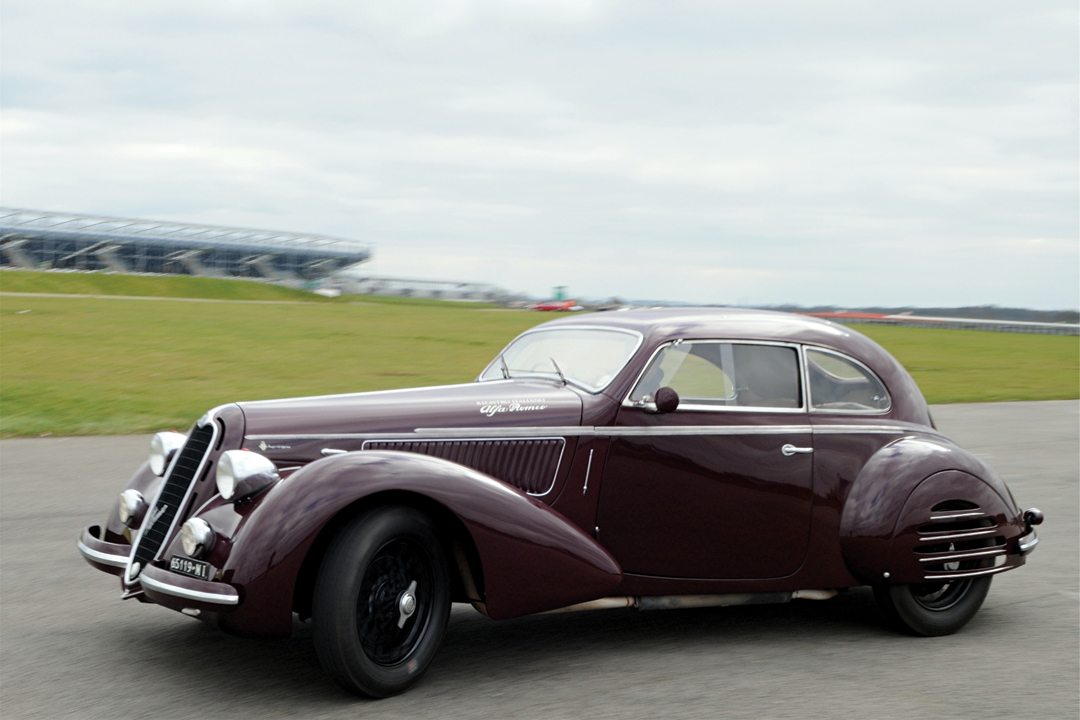
When driven, it is so similar to a modern car, with none of the nodding-donkey effect so often felt with the stiff springs and “chassis suspension” of the average pre-war car. Performance is good, being able to keep up with current traffic flows without either revving the engine to destruction or constantly having to double-declutch. Shifting gears was helped immensely by synchromesh on the top two gears.
Inevitably, the Second World War changed everything. Once warfare ceased, as far as the Mille Miglia was concerned, Alfa picked up where it had left off, with a win in 1947, but Europe and Italy had changed beyond recognition with vital rebuilding taking place and everyone’s priorities different from those of the past.
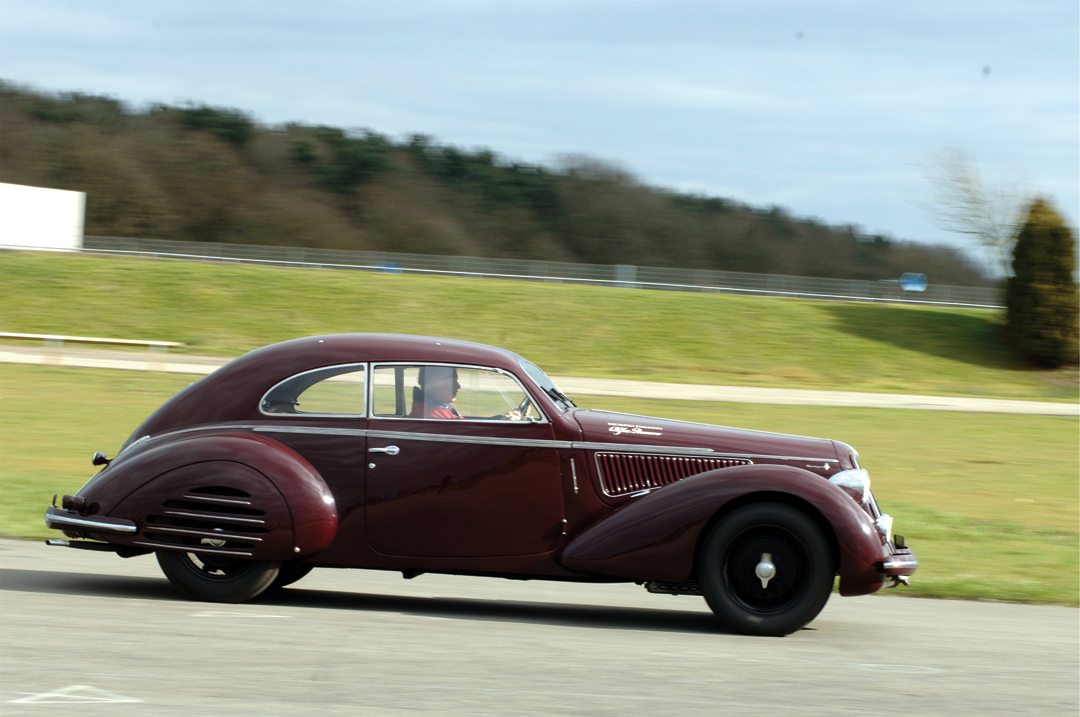
And yet, after driving this car it is fascinating to fantasize about where Alfa would have headed if the war had not caused such appalling worldwide destruction.
I would like to thank Eddie McGuire for his wholehearted assistance, and the Bonfantis for allowing the use of their car. Their museum, the Museo Bonfanti in the northern outskirts of Bassano del Grappa in the Veneto, enjoys an ever-changing selection of automotive exhibitions and is a must-see venue if you are ever in the area.
Years and no.built: 1938–19399, 107
Weight: 1380-kilograms
Engine: Six cylinders in-line, 2309-cc, 105 bhp at 4800 rpm
Cam & Carb: Two overhead camshafts and two horizontal carburetors
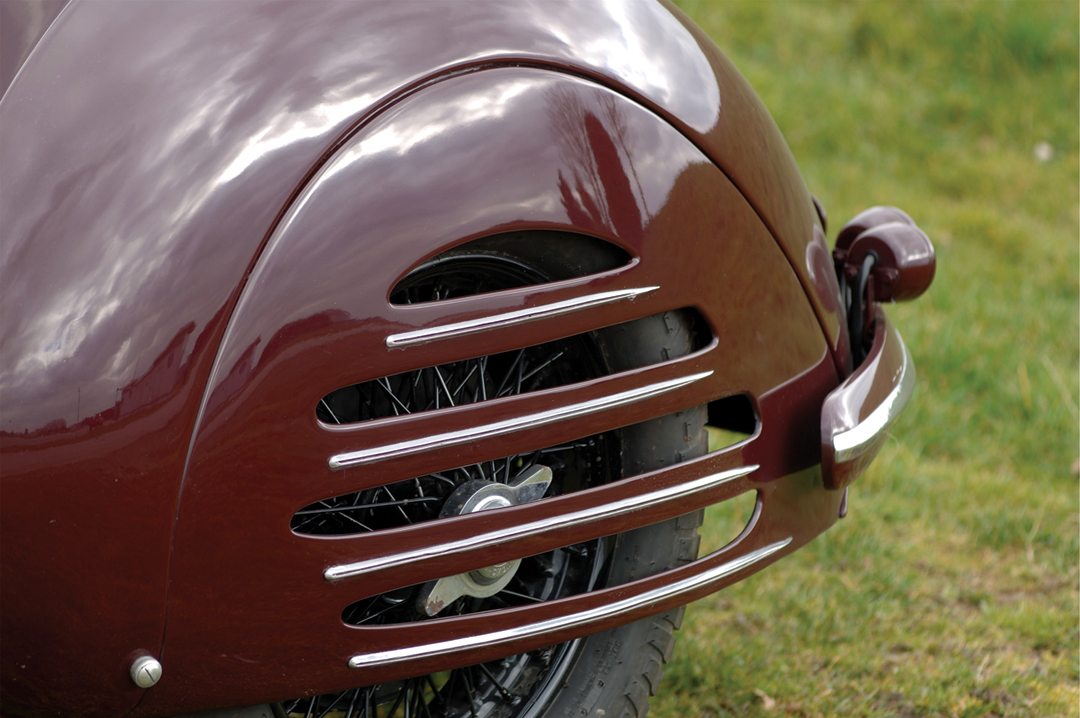
Brakes: Four-wheel hydraulic drum-brakes.


